The Valley of the Queens, located on the west bank of the Nile near Luxor, contains over 90 tombs of Egypt's royal women, princes, and high-ranking officials. Known for its detailed frescoes and inscriptions, it offers a unique view into the lives and beliefs of ancient Egypt’s elite. Notable tombs, including those of Nefertari, Henutmire, and Ahmose, highlight the grandeur of Egyptian society. Though smaller than the Valley of the Kings, it remains an important site for those exploring Egypt’s royal history.
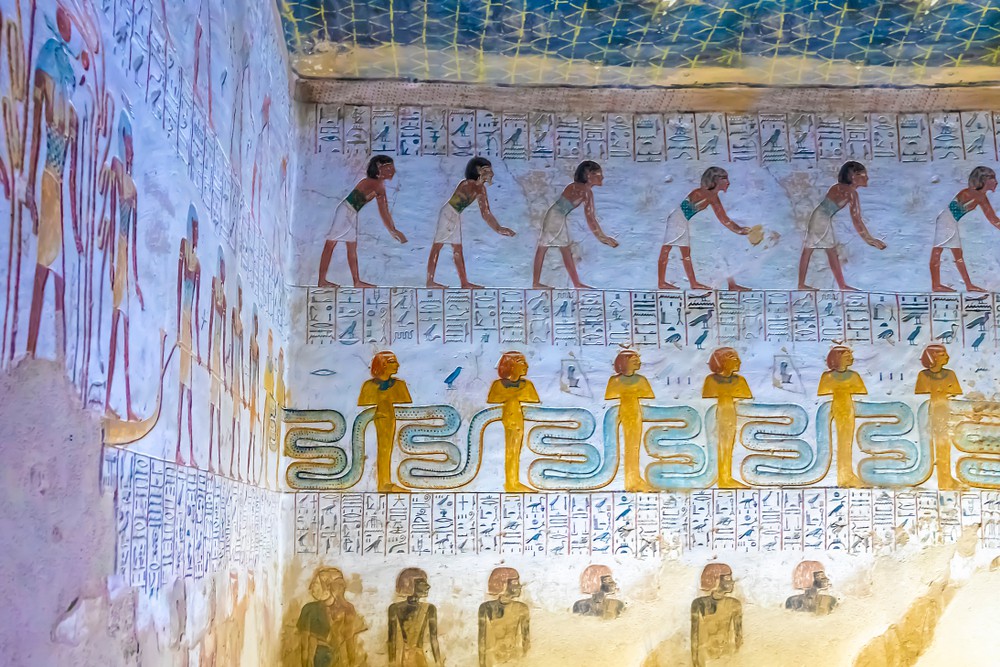
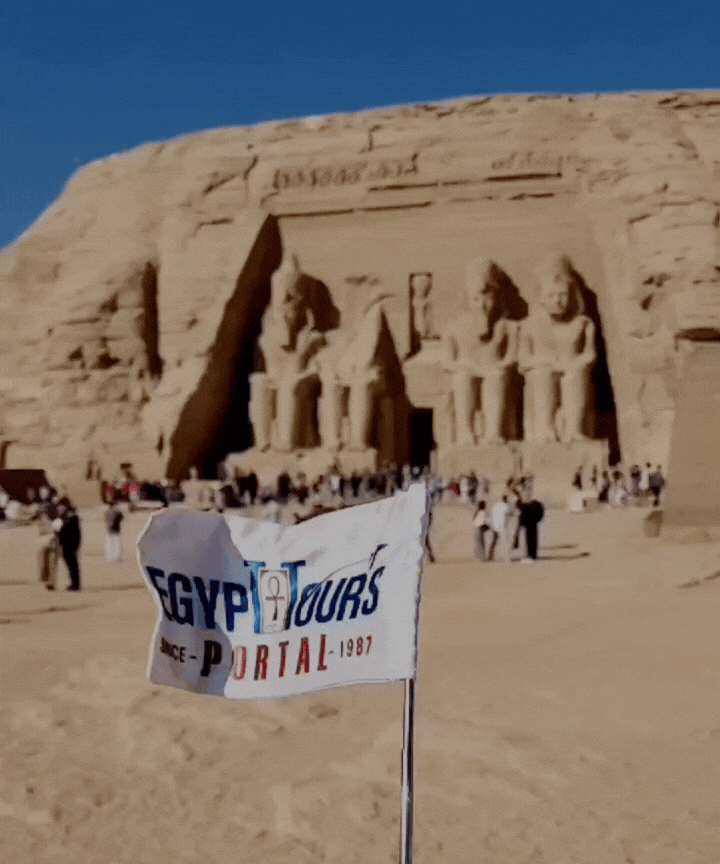
The Valley of the Queens is an archaeological living gem carved by skilled craftsmen located on the west bank of the Nile River near Luxor. It served as a burial ground for royal women, princes, and elite members of Egyptian society during the New Kingdom period (16th to 11th centuries BC).
This timeless resting Place of Egypt’s Royal women is known for its impressive tombs adorned with vibrant artwork and inscriptions that tell some of the most miraculous tales. The Valley of the Queens offers the chance to enjoy a unique holiday that will provide a fascinating glimpse into ancient Egyptian religious beliefs, ancient Egyptian art, and the funerary practices of this glorious civilization.
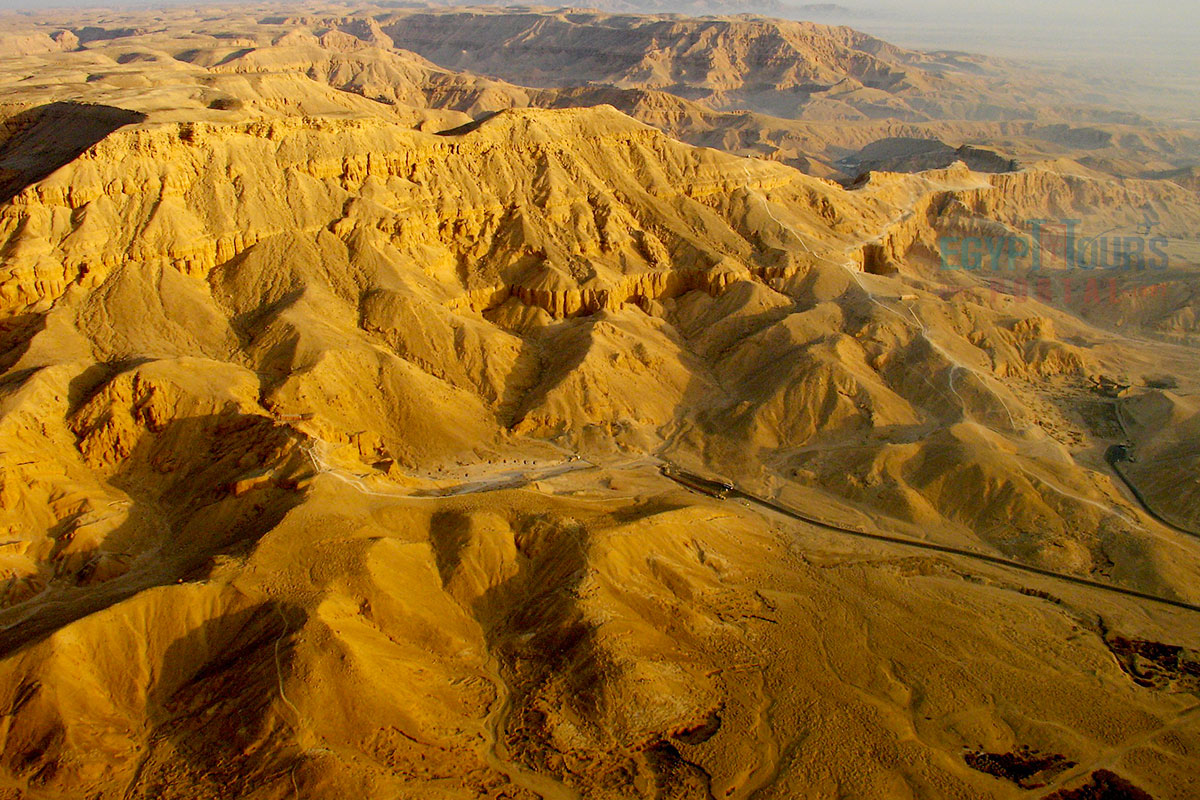
The Valley of the Queens is situated in the Theban Necropolis, just across the Nile from Luxor. It's approximately 3 km (1.9 miles) southwest of the Valley of the Kings. To reach the Valley of the Queens, visitors can start their journey from Luxor, a well-connected city accessible by air, train, and road.
From Luxor, you can hire a taxi or join guided tours that include the Valley of the Queens. The site is ideal to add to your tour itinerary as your travel agency will often include visits to the immortal Valley of the Kings and the stunning Temple of Hatshepsut.
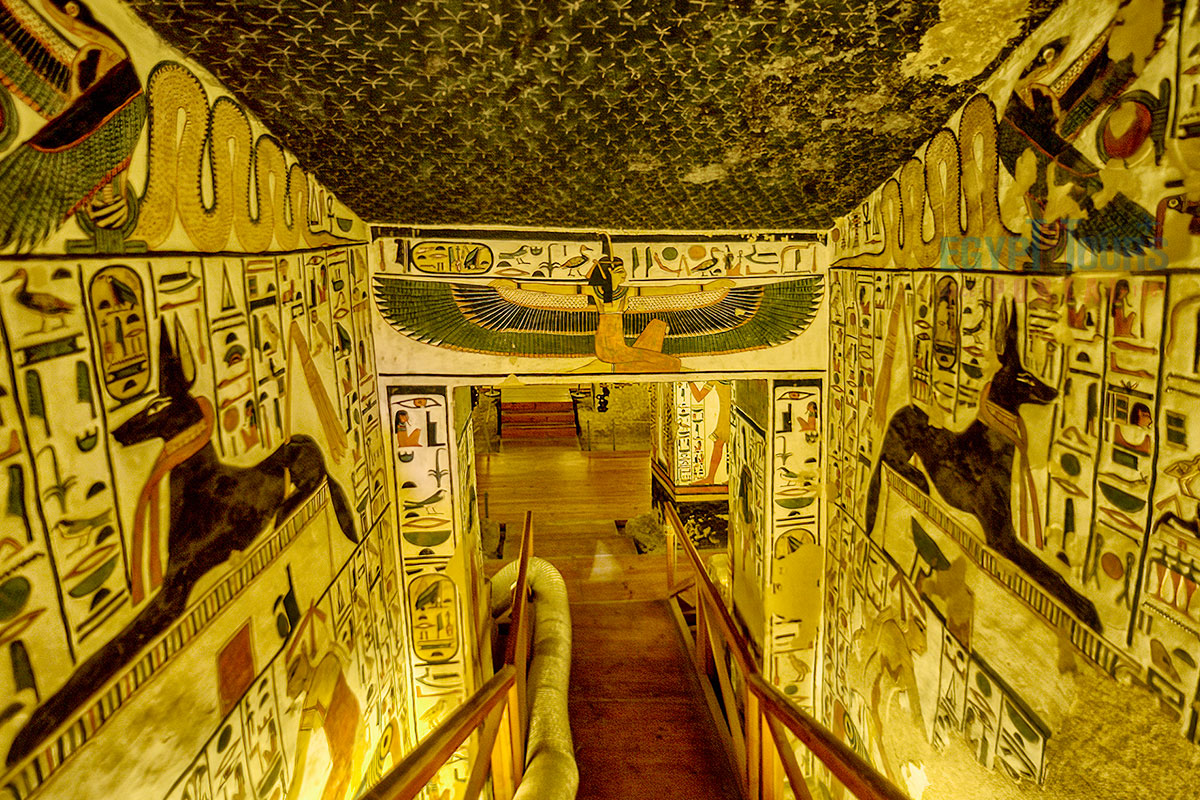
The Valley of the Queens served as a burial site primarily for royal women, princes, and high-ranking members of the New Kingdom's elite. Originally known as Ta-Set-Neferu, meaning "The Place of Beauty," this necropolis was designed to honor and protect the remains of those closest to the pharaohs.
The Valley of the Queens, initially used during the Eighteenth Dynasty, housed tombs for both royals and nobles, such as Princess Ahmose, with relatively simple designs featuring chambers and shafts. During the 19th Dynasty, it became an exclusive burial site for royal women, including Queen Nefertari, while some male family members, like Ramesses II's sons, were interred in the Valley of the Kings. The 20th Dynasty saw tombs for both royal wives and sons, despite economic challenges and tomb robberies.
After the 20th Dynasty, the valley was repurposed, with many tombs reused for multiple burials. In the Roman Period, it continued to be used for burials, and during the Coptic Period, some tombs were converted into hermit shelters, with Christian symbols replacing ancient Egyptian art. The Valley of the Queens was inducted into the UNESCO World Heritage List in 1979.
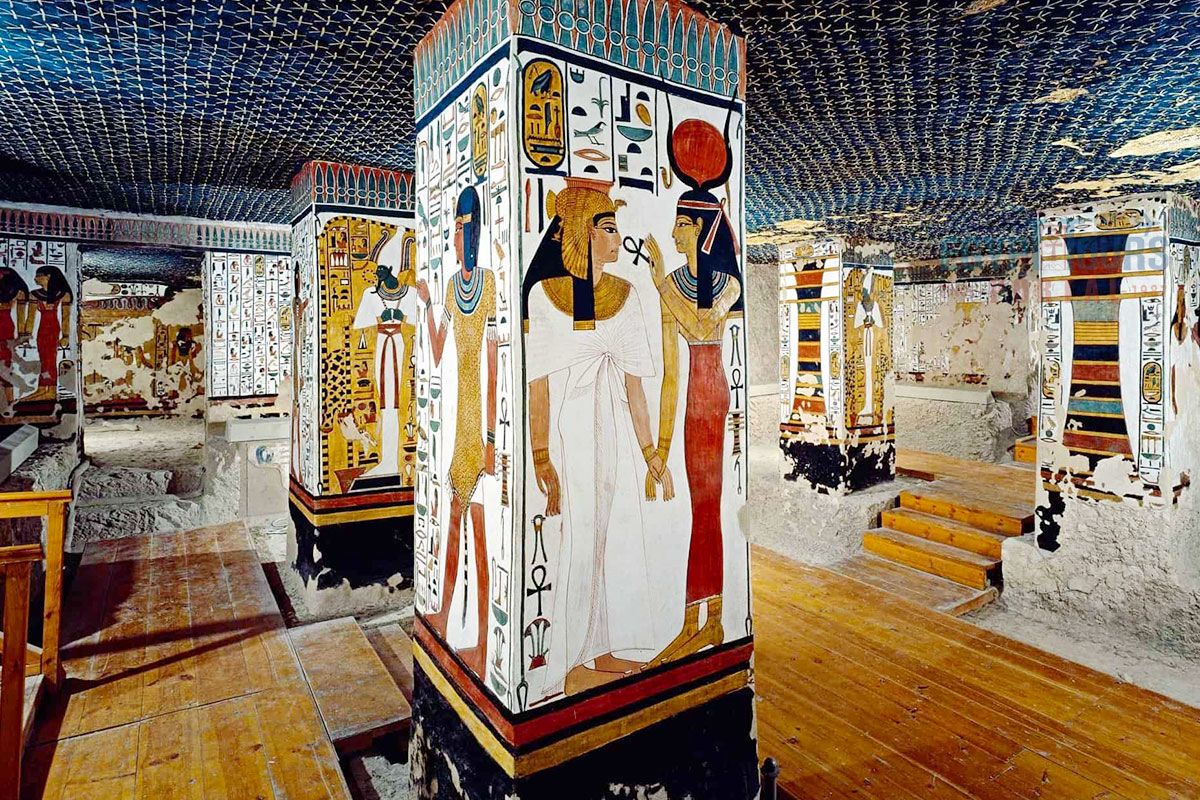
The Valley of the Queens contains over 90 tombs, each with unique designs, artwork, and inscriptions reflecting the deceased's status, religious beliefs, and journey to the afterlife. Among the most famous and well-preserved ancient Egyptian tombs are:
Discover the incredible women and queens of the ancient Egyptian civilization
Read MoreQV66 is the tomb of Nefertari, the Great Wife of Pharaoh Ramesses II which was discovered by Ernesto Schiaparelli in 1904, it once held Nefertari’s mummified body and extensive wall paintings, though most of its contents were looted. The tomb's elaborate paintings, covering 5,200 square feet, depict Nefertari's journey through the afterlife, including detailed portrayals of her beauty, deities, and references to the Book of the Dead.
The tomb's architecture features an antechamber with an astronomical ceiling, side chambers, and a large burial chamber where her sarcophagus once stood. Despite severe damage caused by water, bacterial growth, and visitor humidity, a restoration project (1988-1992) preserved the paintings, making them one of the best-preserved and detailed sources of Egyptian burial practices. Public access to the tomb has since been heavily restricted to protect its fragile artwork.
QV75 is the tomb of Henutmire, who is the Great Wife of Ramesses II. The tomb, situated near the valley's entrance, was likely one of the last decorated during Ramesses II's reign and may have originally been intended for a royal princess. The tomb features extensive decorations, including scenes of Henutmire before various ancient Egyptian deities, such as Ra-Harakhti, Anubis, and Horus.
The inner hall contains depictions of Ra-Harakhty, baboons, and goddesses Isis and Nephthys, along with detailed images of furniture and personal items. Pillars in the inner room are adorned with figures of Horus, Osiris, and the souls of Pe and Nekhen. The tomb was later reused during the 22nd Dynasty and the Roman Period, with additional burials made in the sarcophagus chamber.
Henutmire's sarcophagus bears the title King's Daughter, and Harsiese later usurped a part of her coffin for his burial. Additionally, Paneb, a foreman, was accused of tomb robbery during this time.
Ahmose, meaning "Child of the Moon," was a princess of Egypt’s 17th Dynasty and the only known daughter of Seqenenre Tao and his sister-wife Sitdjehuti. She was the half-sister of Pharaoh Ahmose I and Queen Ahmose-Nefertari and held the titles of King's Daughter and King's Sister. Ahmose tomb is believed to be the first tomb constructed there.
The tomb, located in the Valley of Prince Ahmose, is simple, consisting of one chamber and a burial shaft. Her mummy, along with funerary items like a coffin fragment, leather sandals, and linen with parts of the Book of the Dead, was discovered by Ernesto Schiaparelli during excavations (1903–1905) and is now housed in the Egyptian Museum in Turin, Italy.
QV44 is the tomb of Khaemwaset, one of the sons of Ramesses III, located in the Valley of the Queens. This tomb, along with others such as QV55, QV53, QV43, and QV42, was built for Ramesses III's sons. The tomb's painted reliefs depict Khaemwaset's journey through the afterlife, where he encounters various gods and genies guarding the gates of Osiris' kingdom.
The tomb consists of a corridor, side chambers, and an inner room. Decorations focus more on Ramesses III than his son, showing him before gods like Ptah, Thoth, and Anubis. The side rooms feature scenes of the Sons of Horus and goddesses Isis, Nephthys, Neith, and Serket, while the inner chamber contains fragments of a sarcophagus and Canopic jars.
QV68 is the tomb of Meritamen, daughter and Great Wife of Ramesses II, located in Egypt's Valley of the Queens. Mentioned by Champollion and Lepsius, and later excavated by Ernesto Schiaparelli, the tomb contains scenes featuring Meritamen before various deities, including Neith, Thoth, Ra-Harakhti, Hathor, and Osiris.
She is depicted consecrating Mehet boxes and offering items to Khnum and Ptah. Inscriptions in the tomb describe her as "The Osiris, King's Daughter, Great Royal Wife, Lady of Both Lands, Merytamen, justified." Meritamen was buried in a red granite sarcophagus, now housed in the Berlin Museum, which reiterates her royal titles.
QV55, located at the western end of the main Wadi, is the tomb of Amenherkhepshef, the ninth son of Ramesses III, in Egypt's Valley of the Queens. The tomb follows a Northeast-Southwest axis and consists of several chambers, including a burial chamber with a granite sarcophagus. Though once vividly colored, the tomb's plaster reliefs have faded over time.
Amenherkhepshef, who held titles such as 'king's scribe' and 'great commander of the cavalry,' likely died before year 30 of Ramesses III's reign and may have been the son of Queen Tyti, whose tomb (QV52) is nearby. His burial location is debated, with some evidence suggesting he may have been interred in KV13.
Discovered in 1904 by Ernesto Schiaparelli, the tomb was found empty except for some funerary objects and an unfinished sarcophagus. Modern interventions include protective walls, a metal door, and glass barriers, and the tomb remains open to visitors, though some chambers are closed off.
Tyti was an ancient Egyptian queen of the 20th Dynasty, confirmed to be the wife and sister of Pharaoh Ramesses III and likely the mother of Ramesses IV. Initially, her royal affiliation was unclear, with some believing she was connected to Ramesses X. However, evidence published in 2010, including tomb robbery papyri, clarified her marriage to Ramesses III.
Her titles, including King's Daughter, King's Sister, King's Wife, and King's Mother, further support her connection to Ramesses IV. Her tomb, QV52, is found in the Valley of the Queens and features elaborate decorations with deities, protective gods, and funerary scenes.
The tomb, reused during the Third Intermediate Period, contains representations of the underworld, solar deities, and the Four Sons of Horus. Excavations revealed a variety of funerary objects, including sarcophagi and personal items. Tyti is also associated with her sons Khaemwaset, Amenherkhepshef, and Ramesses-Meryamun, based on similarities in their tombs' decorative styles.

The architecture of the tombs in the Valley of the Queens reflects the high status of its occupants. Many of the tombs are simple in layout, often consisting of a long corridor leading to a burial chamber. However, the tombs are richly adorned with wall paintings and carvings, showcasing the Egyptians’ mastery of artistry and symbolism.
The vibrant colors and religious motifs were designed to ensure the deceased's safe passage into the afterlife. Though the valley is smaller than its counterpart, the Valley of the Kings, it holds equally significant historical and cultural value.
Explore the marvelous architecture of the ancient Egyptian civilization
Read MoreThe Valley of the Queens is a vital part of Egypt's ancient heritage, offering a deep insight into the lives, beliefs, and artistry of the New Kingdom’s elite women and royal children. The tombs of queens like Nefertari and other royals provide visitors with a unique opportunity to witness the grandeur and spirituality of ancient Egyptian culture.
Through their art, architecture, and inscriptions, these tombs continue to tell stories of devotion, power, and the eternal journey to the afterlife. A visit to the Valley of the Queens with our Egypt vacations and Nile river cruises is a journey through time, offering a profound connection to one of the most remarkable civilizations in human history.
Day Trip from Luxor to Cairo by Plane For Canadian Travelers Day trip from Luxor to ...
Tour Location: Cairo...
Tour to Luxor West Bank For Canadian Travelers Tour to Luxor West Bank is like stepp...
Tour Location: Luxor...
Tour to Edfu and Kom Ombo For Canadian Travelers Edfu & Kom Ombo Tour from Luxo...
Tour Location: Edfu/Kom Ombo...
Trip to Dandara and Abydos from Luxor for Canadian Travelers A Trip to Dandara and A...
Tour Location: Dandara/Abydos...
The Valley of the Queens is worth visiting, especially if you're interested in ancient Egyptian history and tomb art. The most famous tomb, that of Queen Nefertari, is renowned for its well-preserved and vibrant wall paintings, considered some of the finest in Egypt. While not as extensive as the Valley of the Kings, the Valley of the Queens offers a more focused look at royal tombs, primarily those of queens and princes, and provides a quieter, less crowded experience.
The Valley of the Kings primarily served as the burial site for pharaohs and high-ranking male officials of the New Kingdom, while the Valley of the Queens was reserved for queens, royal children, and some princes. The tombs in the Valley of the Kings are often larger and more elaborate, designed to reflect the prestige of the pharaohs, whereas the Valley of the Queens contains smaller tombs, though still beautifully decorated, such as the renowned tomb of Queen Nefertari.
The Valley of the Queens is located on the west bank of the Nile near Luxor. Visitors can reach it by car, taxi, or guided tour. Most tourists visit it as part of a broader tour of Luxor’s West Bank, which includes the Valley of the Kings, the Temple of Hatshepsut, and the Colossi of Memnon. From Luxor city, the valley is about a 40-minute drive. Public transportation is limited, so hiring a taxi or booking a tour is recommended.
The Valley of the Queens is the burial site for many queens, princes, and princesses of Egypt’s New Kingdom. Some notable figures buried here include Queen Nefertari, the Great Wife of Ramesses II, and princes such as Amenherkhepshef and Khaemwaset. Additionally, several royal children and other family members of pharaohs were interred in the valley.
You can expect to spend around 200-500 Egyptian pounds to visit the Valley of the Queens, depending on your specific needs and preferences. The entrance to Queen Nefertari’s tomb, considered the most exquisite, requires a separate ticket and costs significantly more, around $45 USD. Prices may vary depending on the season or special tours.
There are about 90 known tombs in the Valley of the Queens. These include the tombs of queens, princes, and princesses from the New Kingdom. However, not all tombs are open to the public. Typically, a select few, including the tombs of Queen Nefertari and some royal children, are available for visitors to explore.
The entire country of Egypt deserve to be explored with its every heavenly detail but there are places that must be seen before any other such as the breathtaking Hurghada's red sea, The wonders of Cairo the pyramids of Giza, the great sphinx, the Egyptian Museum, Khan El Khalili Bazaar, the wonders of Luxor like Valley of the Kings, Karnak & Hatshepsut temple and the wonders of Aswan such as Abu Simbel temples, Philea temple, Unfinished obelisk and The Wonders of Alexandria like Qaitbat Citadel, Pompey's Pillar and Alexandria Library. Read more about the best places to visit in Egypt.
If you want to apply for a Visa On Arrival that lasts for 30 days then you should be one of the eligible countries, have a valid passport with at least 6 months remaining and pay 25$ USD in cash, as for the E-Visa for 30 day you should have a valid passport for at least 8 months, complete the online application, pay the e-visa fee then print the e-visa to later be presented to the airport border guard. You could also be one of the lucky ones who can obtain a free visa for 90 days. Read more about Egypt travel visa.
Egypt has a variety of delicious cuisines but we recommend “Ful & Ta’meya (Fava Beans and Falafel)”, Mulukhiya, “Koshary”, a traditional Egyptian pasta dish, and Kebab & Kofta, the Egyptian traditional meat dish.
The best time to travel to Egypt is during the winter from September to April as the climate becomes a little tropical accompanied by a magical atmosphere of warm weather with a winter breeze. You will be notified in the week of your trip if the Climate is unsafe and if any changes have been made.
You should pack everything you could ever need in a small bag so you could move easily between your destinations.
We have been creating the finest vacations for more than 20 years around the most majestic destinations in Egypt. Our staff consists of the best operators, guides and drivers who dedicate all of their time & effort to make you have the perfect vacation. All of our tours are customized by Travel, Financial & Time consultants to fit your every possible need during your vacation. It doesn't go without saying that your safety and comfort are our main priority and all of our resources will be directed to provide the finest atmosphere until you return home.
You will feel safe in Egypt as the current atmosphere of the country is quite peaceful after the government took powerful measures like restructuring the entire tourist police to include all the important and tourist attractions in Egypt. Read more about is it safe to travel to Egypt.
Wear whatever feels right and comfortable. It is advised to wear something light and comfortable footwear like a closed-toe shoe to sustain the terrain of Egypt. Put on sun block during your time in Egypt in the summer to protect yourself from the sun.
The best activity is by far boarding a Nile Cruise between Luxor and Aswan or Vise Versa. Witness the beauty of Egypt from a hot balloon or a plane and try all the delicious Egyptian cuisines and drinks plus shopping in old Cairo. Explore the allure and wonders of the red sea in the magical city resorts of Egypt like Hurghada and many more by diving and snorkeling in the marine life or Hurghada. Behold the mesmerizing western desert by a safari trip under the heavenly Egyptian skies.
There are a lot of public holidays in Egypt too many to count either religious or nation, the most important festivals are the holy month of Ramadan which ends with Eid Al Fitr, Christmas and new years eve. Read more about festivals & publich holidays in Egypt.
Egypt is considered to be one of the most liberal Islamic countries but it has become a little bit conservative in the last couple of decades so it is advised to avoid showing your chest, shoulders or legs below the knees.
Arabic is the official language and Most Egyptians, who live in the cities, speak or understand English or at least some English words or phrases. Fewer Egyptians can speak French, Italian, Spanish, and German. Professional tour guides, who work in the tourism sector, are equipped to handle visitors who cannot speak Arabic and they will speak enough English and other languages to fulfill the needs of all our clients.
The fastest way is a car, of course, a taxi. If you are in Cairo ride a white taxi to move faster or you could board the fastest way of transportation in Egypt metro if the roads are in rush hour.
The temperature in Egypt ranges from 37c to 14 c. Summer in Egypt is somehow hot but sometimes it becomes cold at night and winter is cool and mild. The average of low temperatures vary from 9.5 °C in the wintertime to 23 °C in the summertime and the average high temperatures vary from 17 °C in the wintertime to 32 °C in the summertime. The temperature is moderate all along the coasts.
It is the home of everything a traveler might be looking for from amazing historical sites dating to more than 4000 years to enchanting city resorts & beaches. You will live the vacation you deserve as Egypt has everything you could possibly imagine.









